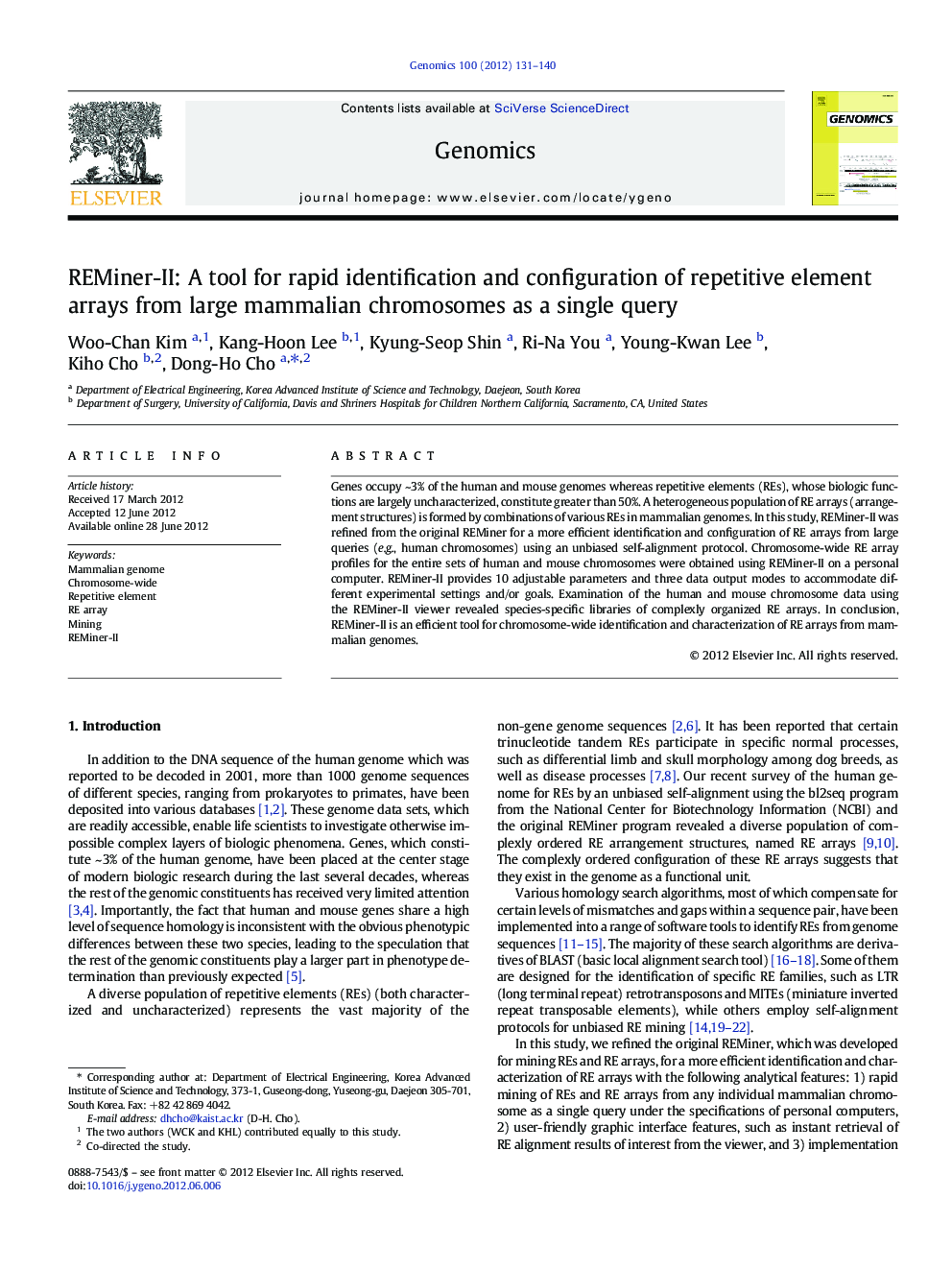| Article ID | Journal | Published Year | Pages | File Type |
|---|---|---|---|---|
| 5907969 | Genomics | 2012 | 10 Pages |
Abstract
Genes occupy ~Â 3% of the human and mouse genomes whereas repetitive elements (REs), whose biologic functions are largely uncharacterized, constitute greater than 50%. A heterogeneous population of RE arrays (arrangement structures) is formed by combinations of various REs in mammalian genomes. In this study, REMiner-II was refined from the original REMiner for a more efficient identification and configuration of RE arrays from large queries (e.g., human chromosomes) using an unbiased self-alignment protocol. Chromosome-wide RE array profiles for the entire sets of human and mouse chromosomes were obtained using REMiner-II on a personal computer. REMiner-II provides 10 adjustable parameters and three data output modes to accommodate different experimental settings and/or goals. Examination of the human and mouse chromosome data using the REMiner-II viewer revealed species-specific libraries of complexly organized RE arrays. In conclusion, REMiner-II is an efficient tool for chromosome-wide identification and characterization of RE arrays from mammalian genomes.
Related Topics
Life Sciences
Biochemistry, Genetics and Molecular Biology
Genetics
Authors
Woo-Chan Kim, Kang-Hoon Lee, Kyung-Seop Shin, Ri-Na You, Young-Kwan Lee, Kiho Cho, Dong-Ho Cho,
